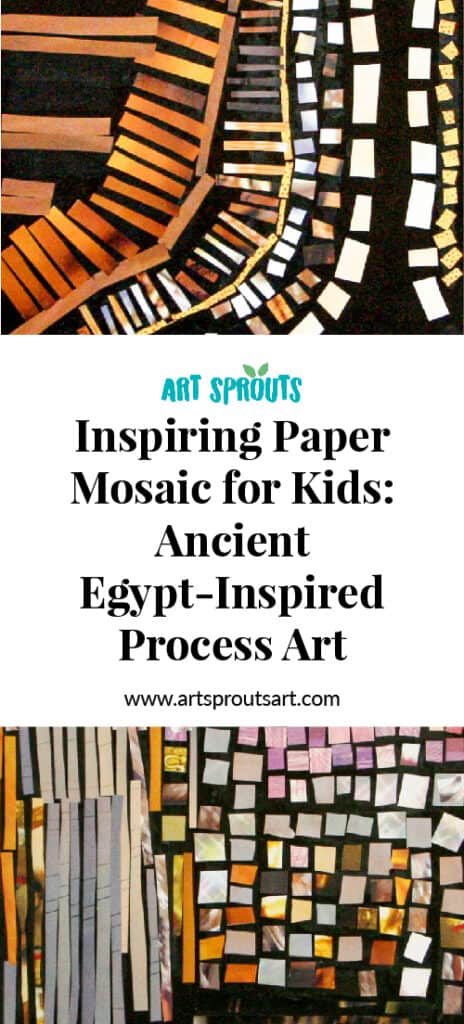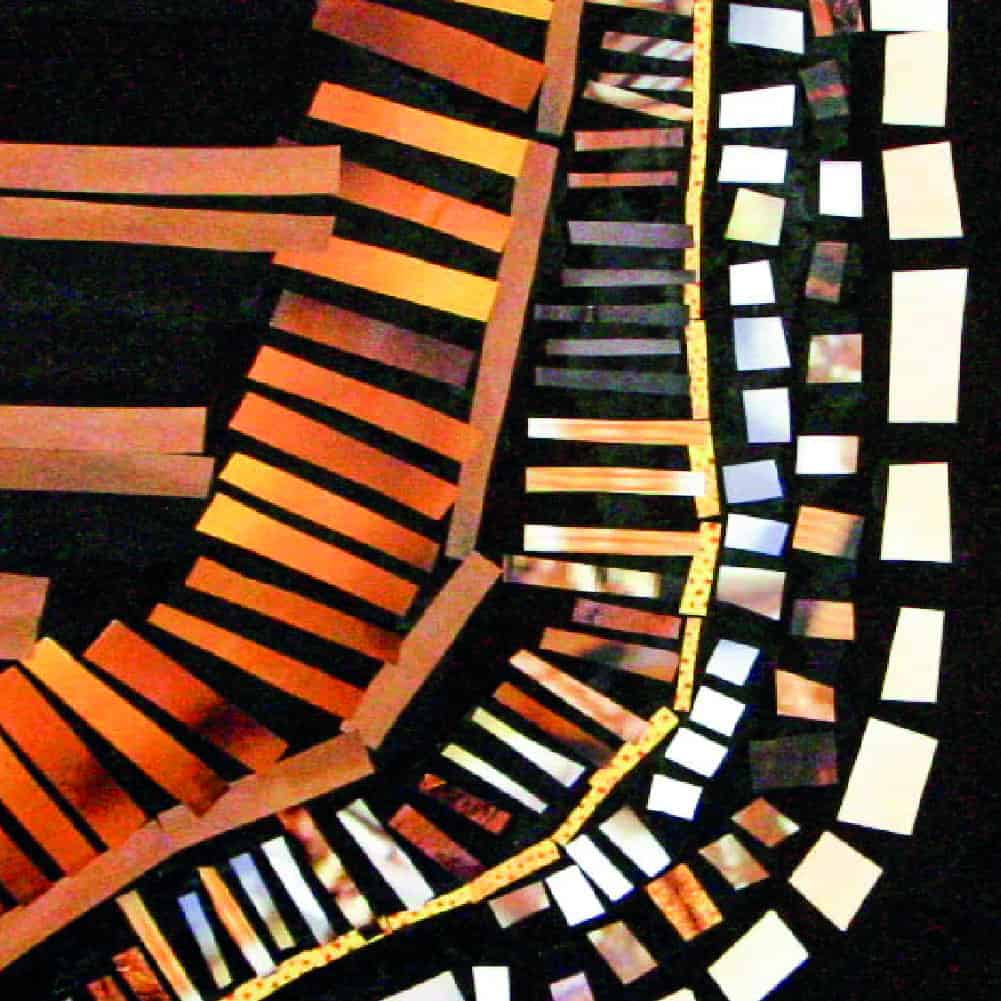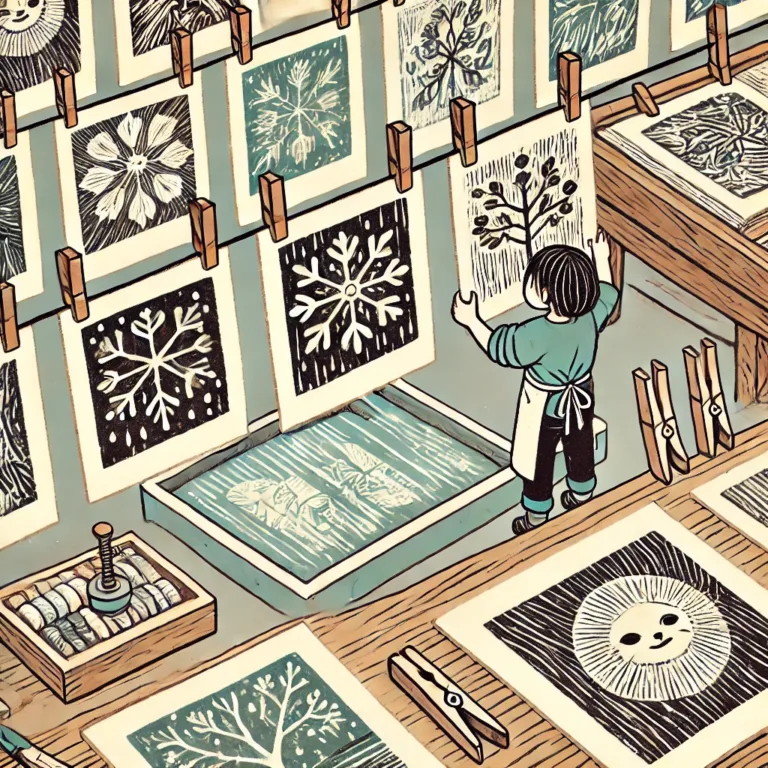Inspiring Paper Mosaic for Kids: Ancient Egypt-Inspired Process Art
Step into the world of process art with a refreshing paper mosaic activity that channels the natural beauty of the Nile River. This engaging lesson invites kids to sift through magazine pages, cutting and arranging geometric tiles to recreate the lush, fertile banks of the Nile.
Kids will love the freedom of this process art activity, feeling no pressure to create a “perfect picture.” This collage-making experience is designed to spark curiosity about our world’s diverse environments, focusing on how the Nile has shaped the land around it and nurtured the ancient Egyptian civilization.
Looking for more process-based art activities? Check out our post on printmaking with found objects, or the super fun, toddler-friendly sculpting with paper pulp!
Create a Nile-Inspired Paper Mosaic
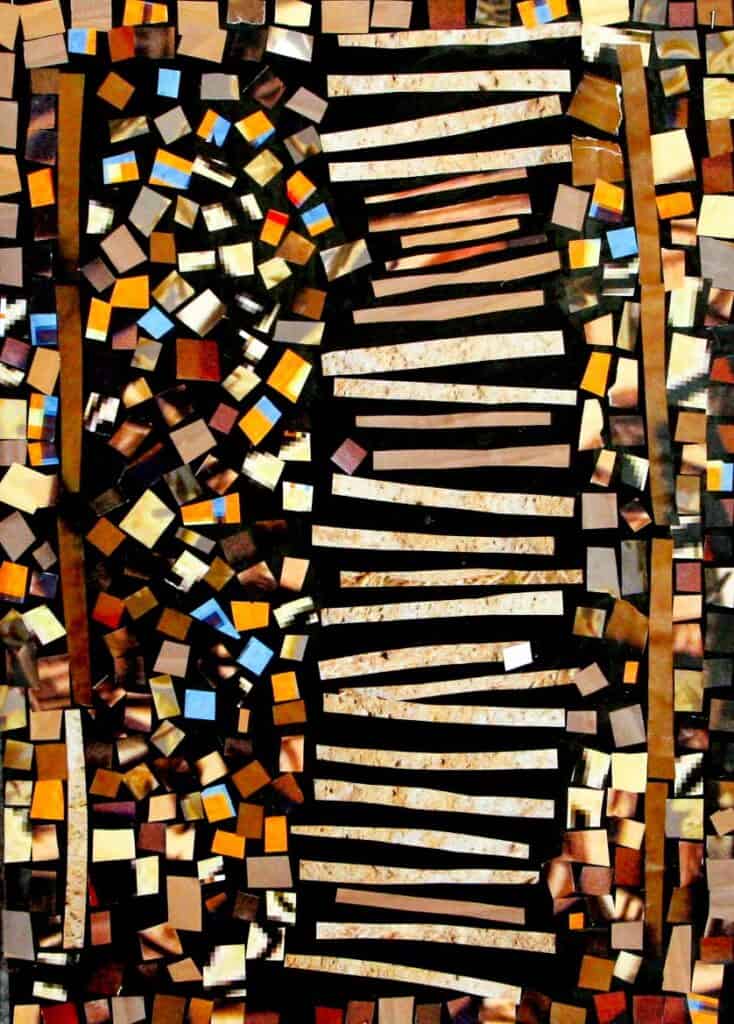
Skills Developed:
- Fine Motor Skills: Cutting out shapes with scissors improves hand-eye coordination and refines small muscle movements.
- Color Recognition and Sorting: Picking and grouping pieces by color helps children learn about colors and practice categorizing.
- Artistic Perception: Creating patterns and designs develops visual-spatial skills and encourages imaginative expression.
- Cultural Awareness: Learning about Egyptian art offers a window into a different culture, broadening children’s worldviews.
- Spatial Awareness: Placing shapes onto the collage teaches children to understand and utilize space effectively in art.
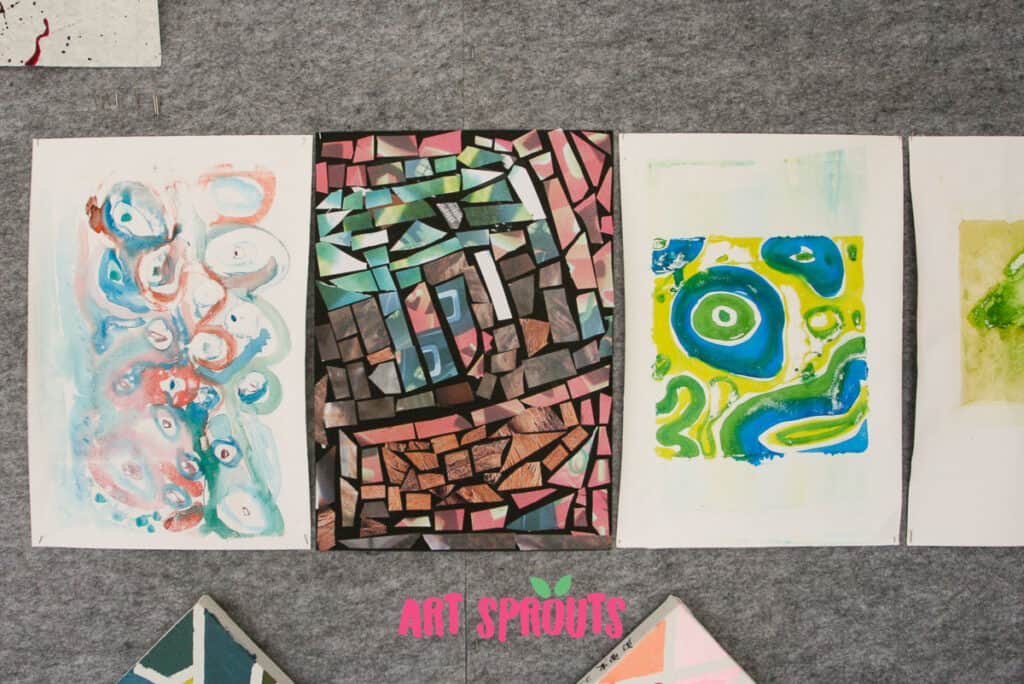
Materials:
- Scissors
- Assorted magazines
- Black cardboard
- Glue (Elmer’s glue or all purpose glue stick)
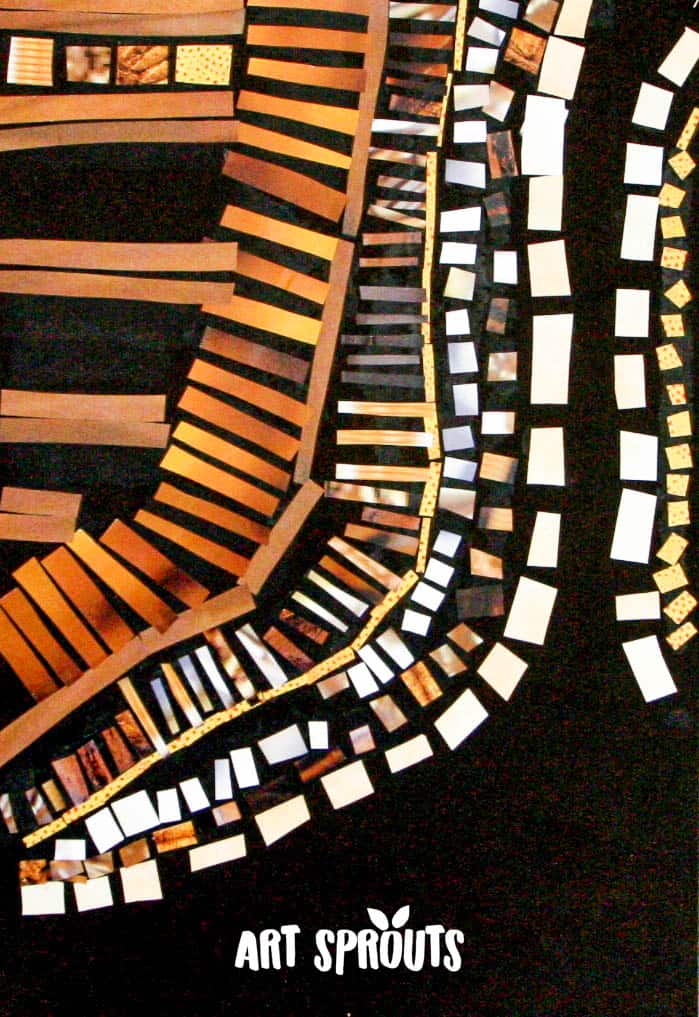
Prep:
Before diving into the collage-making, let’s embark on a quick discovery of ancient Egypt. Show your kids captivating images of the Nile River from above, the sprawling desert, and the timeless art found in the ruins of this ancient civilization. Point out the vibrant blues and golds that dominate the color schemes of Egyptian artifacts, and compare them to the more subdued desert hues.

The Nile River was the cornerstone of Ancient Egyptian civilization. Stretching over 6,600 kilometers (4,000 miles), it is recognized as the longest river in the world and played a critical role in sustaining life in a land that was otherwise desert. Each year, like clockwork, the Nile flooded, bringing water and nutrient-rich silt to the land, which made it possible for the Egyptians to grow wheat and other crops. This annual inundation was so vital that their calendar was based around it. The river also served as a highway for transporting goods and people, which helped to knit the civilization together. Without the Nile, the grand achievements of Ancient Egypt, from its majestic pyramids to its enduring culture, would have been unthinkable.
Prompts:
- “What colors in the magazines remind you of the desert sands we saw in the pictures?”
- “Can you find any shapes in the magazines that look like the winding Nile River viewed from above?”
- “The desert at night is very dark; can you find dark colors for our collage to show this?”
- “Deserts aren’t just one color. What other colors do you see when we look at these aerial photos?”
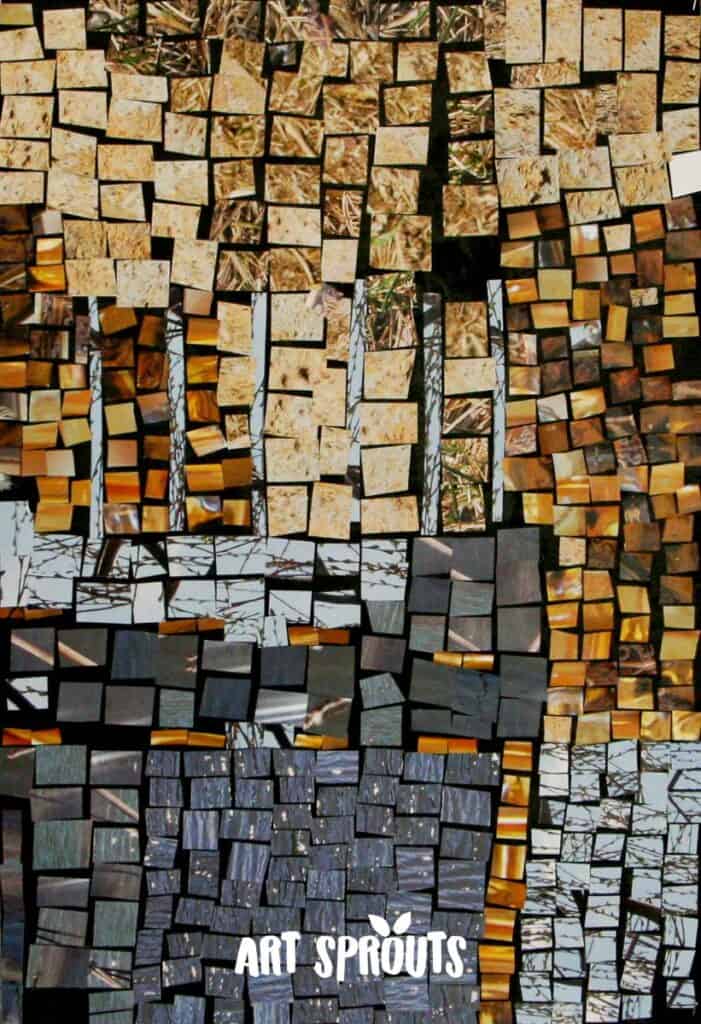
Steps:
- Flip through the magazines with your children, looking for colors and textures that echo the ancient Egyptian palette and designs, as well as the colors of the desert and the Nile River.
- Encourage the kids to carefully cut out various shapes and patterns from the images—think squares, rectangles, triangles, and strips.
- On the black cardboard, have them arrange their cutouts into a mosaic, leaving space between pieces to create a striking negative space effect. This step doesn’t require glue yet—it’s all about planning the composition and experimenting with their paper tiles.
- Once they’re satisfied with their layout, it’s time to begin the collage. Show them how to apply glue to the back of each piece and secure it in place on the cardboard.
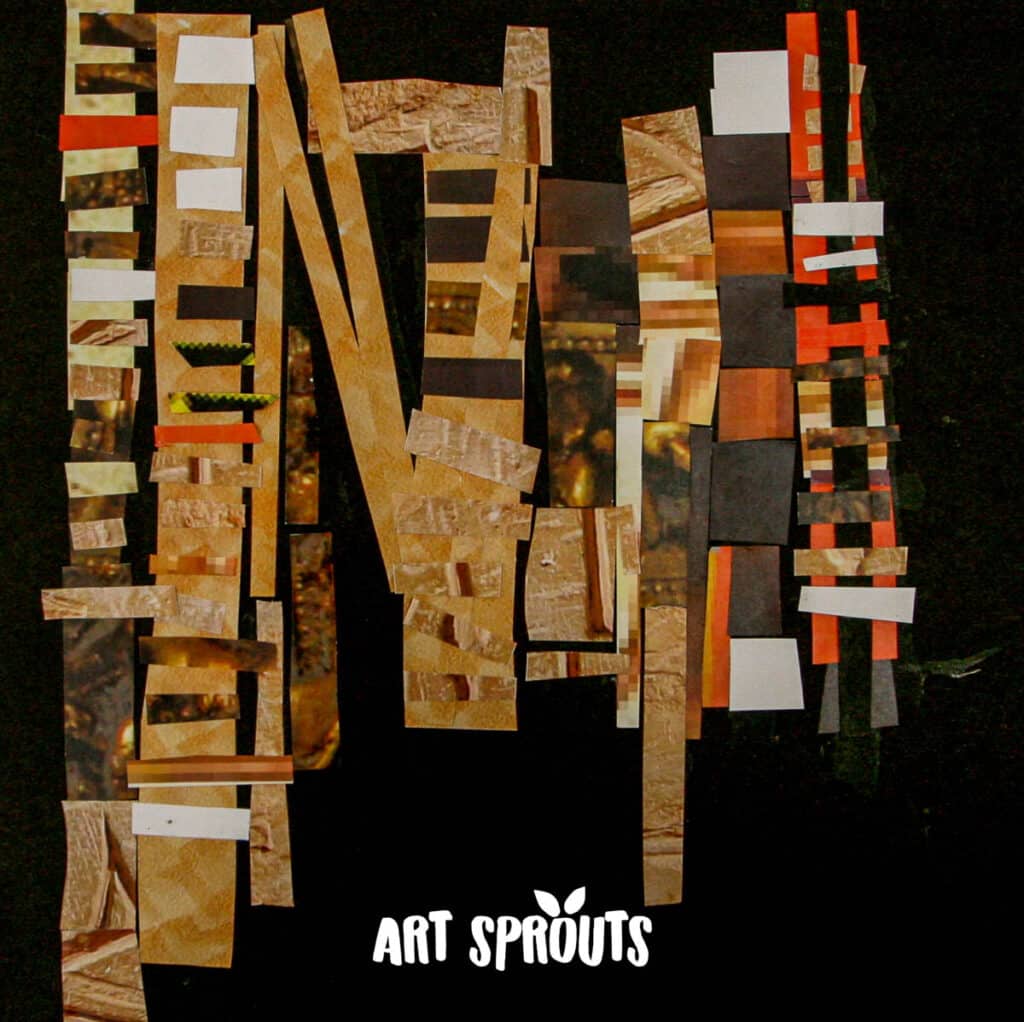
Extensions:
- Sensory Exploration: For younger children, especially, incorporate a sensory element by providing textured materials they can add to their collages, such as sandpaper or fabric. This tactile experience can help them imagine the roughness of the desert and the smooth flow of the Nile.
- Cultural Exploration: Encourage children to learn more about Egyptian culture by researching different symbols used in ancient Egyptian art, like the scarab or the eye of Horus.
- Environment exploration: You can use the activity as an introduction to the unique environment and habitat of the Nile River, from its mysterious source to the large delta in the Mediterranean Sea. Kids will explore the Nubian desert and the Nile’s flourishing banks, made fertile by annual floods and silt deposits.
Save for later:
